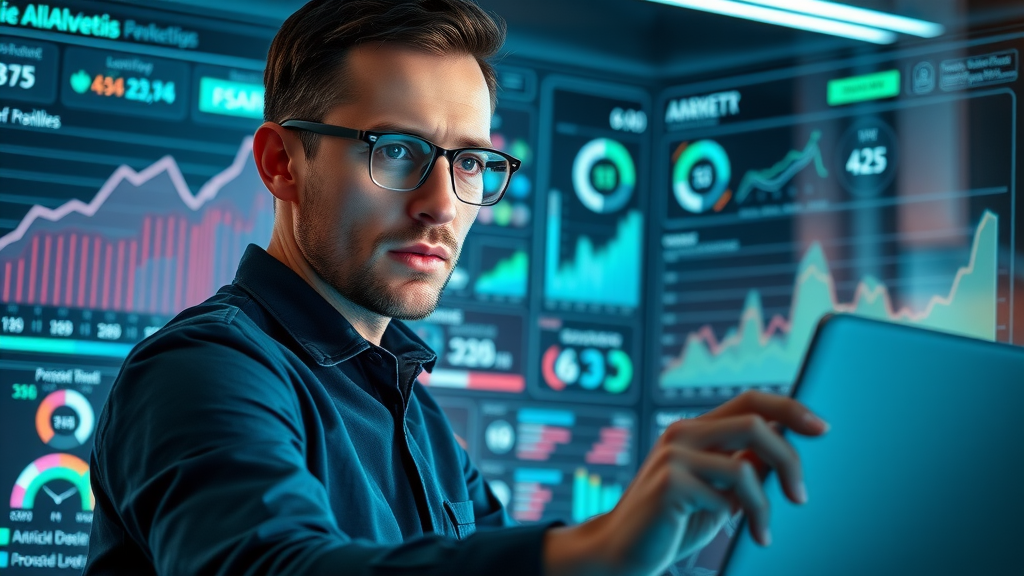Did you know that videos generate 1200% more shares on social media than text and images combined ? In today’s digital marketing world, social media video marketing is not just a buzzword—it’s your brand’s fastest route to higher engagement, increased visibility, and lasting impact. Whether you're a business owner, marketer, or content creator, harnessing the power of video can dramatically amplify your results. Dive into this comprehensive guide to discover actionable strategies that can transform your reach and turn casual viewers into devoted fans.
Unlock Rapid Growth: Why social media video marketing Matters More Than Ever
The digital landscape is saturated, making it a challenge for brands to rise above the noise. In this environment, social media video marketing has emerged as a transformative marketing tool. Not only do videos attract attention quickly, but they also foster authentic interaction and sharing—proven to significantly boost customer engagement. Research shows that a well-crafted media video on social platforms outperforms static images and text-based posts, generating 49% higher engagement and exponentially increasing your chance for viral reach.
This isn’t just about increasing your follower count; it’s about leveraging video content as a critical component of your digital marketing strategy. Modern audiences crave short-form videos, live streams, and behind-the-scenes looks—these formats humanize your brand and create strong personal connections. The immediacy and visual appeal of video marketing make it an essential asset in every digital campaign because it can be measured, optimized, and repeated for sustainable brand growth.
Forward-thinking brands are embracing video marketing strategies for everything from product launches and customer testimonials to helpful explainer videos. With algorithms on platforms like Instagram, TikTok, and YouTube Shorts favoring video view time, integrating video into your marketing team’s efforts isn’t just advised—it’s essential for staying competitive and relevant in any industry.

- Startling research shows videos generate 1200% more shares on social media than text and images combined. Explore how leveraging social media video marketing can revolutionize your digital marketing strategy and deliver exponential engagement results.
Comprehensive Overview: What You'll Gain from Mastering social media video marketing
Mastering social media video marketing opens the door to a host of valuable skills and advantages. Not only will you grasp the core principles behind creating content that resonates, but you’ll also be equipped to craft a video marketing strategy tailored for any brand or market niche. The ability to adapt to different media platforms and understand their unique content requirements ensures your messages never fall flat.
By learning to produce, edit, and distribute quality video content, you become agile in adapting marketing strategies to each major social media platform—Instagram, Facebook, TikTok, YouTube Shorts, and LinkedIn. You'll discover which types of video (from explainer video guides to branded video ads) work best for your brand and how to keep your audience engaged. Mastery involves ongoing testing, measuring, and refining, so your strategy is always moving toward better results.
This knowledge doesn’t just help boost views; it establishes you as a thought leader and drives real engagement. You’ll walk away knowing exactly how to plan, produce, and launch magnetic videos—plus how to measure performance, scale campaigns, and fuel continuous growth for your brand.

- Understand core principles of video marketing for social media
- Learn to craft a winning video marketing strategy for any brand
- Discover how to customize video content for every major social media platform
- Master types of video content that drive real engagement
- Acquire actionable steps for video production and measurement
Defining Excellence: What Is social media video marketing?
Fundamentals of social media video marketing Success
At its core, social media video marketing means using compelling video content to capture attention, share your message, and foster relationships across various media platforms. The fundamentals involve strategic planning—knowing your target audience , selecting the right form video (like live streams, stories, or testimonials), and ensuring every clip aligns with your brand voice. Successful campaigns don’t just showcase products or services; they tell stories that educate, entertain, and inspire viewers to act.
Creating engaging social video content means combining creative storytelling with technical know-how. Even one quality video, when shared consistently and optimized for specific media platforms, can create a ripple effect—driving shares, comments, and valuable customer engagement. The focus should be on delivering real value to your audience, whether that’s solving a problem with an explainer video or sparking emotion with an authentic behind-the-scenes look at your brand.
Metrics like watch time, shares, and conversion rates highlight what’s working and where to improve. By analyzing these, savvy marketers refine their video marketing strategy, ensuring each new video outperforms the last and contributes to longer-lasting brand awareness.
The Role of media video, video marketing, and social media platforms in Modern Marketing
Today’s marketing landscape is visual, fast-paced, and dominated by video. Media video isn’t just content—it’s a marketing tool that influences perceptions, builds brand awareness , and achieves tangible business outcomes. Social platforms prioritize video in their algorithms, making it easier for high-quality content to reach broader audiences in less time. This evolution means brands have unprecedented power to communicate directly with users, tell their story, and showcase value—right from their smartphone or office.
By leveraging social media platforms, brands can rapidly test, tweak, and scale campaigns. For example, TikTok’s algorithm rewards creative, short video content, while LinkedIn favors educational thought leadership. Understanding these nuances enables you to tailor your video marketing campaign for maximized impact, leading to better results and more meaningful connections with your target audience .
The right media video strategy integrates seamlessly into all digital marketing efforts, uniting brand messaging across paid ads, organic posts, and influencer partnerships, while consistently reinforcing trust and credibility with every video view.
Videos on social media receive 49% higher engagement than static posts—making media video a vital marketing tool for influencing brand awareness and achieving outstanding reach.

Step-By-Step Guide: Building Your social media video marketing Strategy
Establishing Target Audience and Brand Awareness Through Video Content
Every winning video marketing strategy starts with a deep understanding of your target audience . This means researching demographics, interests, pain points, and behaviors to craft content that truly resonates. By segmenting your audience and mapping out their journey, you can tailor messages at every stage—from awareness to conversion. High-engagement videos, such as explainer videos or behind-the-scenes clips, enable you to introduce your brand in a relatable and memorable way.
Building brand awareness through video means more than slapping your logo onto every clip. It’s about consistency in visual style, tone of voice, and story. Audiences respond to brands that show personality—whether you’re launching a new product, sharing customer testimonials, or providing quick tips. The more authentic and targeted your approach, the more likely you’ll spark lasting interest and repeat engagement.
Incorporating call-to-actions like subscriptions, shares, or comments also strengthens relationships with viewers. Remember: the more you cater your content to what your target audience needs and values, the more effective your digital marketing—and the faster your brand awareness will soar.
Crafting a Winning video marketing strategy Aligned with Your Marketing Campaign
Developing a video marketing strategy means setting clear objectives and aligning each piece of video content with your broader marketing campaign. Start by defining what you want to achieve—brand recall, website traffic, sales, or customer loyalty—and design video formats that support these goals. For example, use explainer videos to highlight benefits, testimonial videos for trust-building, and short-form ads for quick brand messaging.
Plan content calendars around major launches or promotions, and ensure your brand’s messaging remains cohesive across all marketing efforts. Track which types of video drive the most engagement and continually adapt your approach for the highest ROI. The most successful strategies don’t just rely on one-off hits; they depend on consistent publishing, A/B testing, and real-time feedback analysis.
Finally, collaborating with your full marketing team—from creatives and editors to data analysts—ensures that every video supports your wider goals. This cross-functional approach increases campaign performance and ensures your video marketing strategy stays aligned, dynamic, and capable of generating outstanding business results.
Setting Clear Campaign Goals for Each Social Media Platform
Each social media platform comes with its own strengths, user preferences, and content formats. For the most impact, set specific goals—like increased video views on YouTube Shorts, shares on Facebook, or lead generation on LinkedIn Video. Matching your objectives to each platform’s unique strengths drives better marketing efforts and avoids wasted resources.
For instance, Instagram Reels and TikTok excel at raising awareness through short-form, viral content, while LinkedIn’s video tools are best suited for building professional credibility and authority. Consider what actions matter most for your business: Are you seeking more comments, shares, website clicks, or direct purchases? Clearly defining these goals enables you to measure and optimize every campaign.
Use built-in analytics tools provided by each media platform to monitor progress toward these goals. This data-driven approach arms you with insights needed to adjust quickly, ensuring your video marketing campaign achieves consistent, trackable results.
Integrating High-Quality Video Production into Social Media Marketing
Don’t let advanced production needs or a small studio budget stop you from creating quality video . Today’s smartphone cameras and affordable editing apps make it easier than ever to deliver sharp, professional content. Focus on clear visuals and crisp audio, and prioritize creativity and authenticity over flashy effects. Whether you’re producing story-driven snippets or instructional guides, let real people and real stories shine.
Consistency is key. Develop templates for branding (intros, outros, logo placement), pick color schemes, and use distinctive thumbnail designs to cement your content’s brand identity. Batch filming and scheduling can lighten your workload, making it easier to post frequently and maintain momentum. When possible, collaborate with influencers or embrace user-generated content to diversify your output and appeal to even broader audiences.
Strong video production ties directly into your brand’s digital marketing strategy, increasing the shareability and impact of each post. By setting your standards high, even your simplest videos can stand out, drive traffic, and build strong customer engagement, without breaking the bank.
Content That Converts: Types of Video Content That Dominate social media
Not all videos are created equal. The types of video you choose have a significant effect on your results. High-performing video content for social media marketing includes explainer videos that clarify concepts, testimonial videos that inspire trust, eye-catching how-to guides, and snappy branded video ads that transfer complex messages in seconds. Equally popular are behind-the-scenes stories and authentic user-generated content, as audiences increasingly crave authenticity and relatability from brands.
Short-form videos have become the backbone of any media marketing plan, especially on platforms like YouTube Shorts, TikTok, and Instagram Reels. These formats thrive on quick storytelling, humor, and visual hooks, making them perfect for initiating conversations and driving shares. Long-form content, meanwhile, suits platforms like YouTube for deep dives or educational lessons. By mixing up different types of videos, brands can cater to a wider range of audience interests while maximizing their reach.
Knowing your content mix helps you plan an effective calendar and keeps your content strategy agile. Test what resonates, monitor performance metrics, and rotate formats to keep surprising and delighting your viewers.

- Explainer video, testimonial videos, how-to guides, branded video ad, behind-the-scenes stories, and user-generated content
| Platform | Top Performing Video Types | Ideal Length | Primary Goal |
|---|---|---|---|
| Instagram Reels | Explainer video, user-generated content, quick product demos | 15-30 sec | Brand engagement, shares |
| Testimonial videos, branded video ad, how-to guides | 30-90 sec | Reach, conversation, traffic | |
| TikTok | Viral challenges, behind-the-scenes, explainer videos | 10-60 sec | Awareness, virality |
| YouTube Shorts | How-to, branded snippets, influencer content | 15-60 sec | Discovery, subscriptions |
| LinkedIn Video | Thought leadership, company culture stories, testimonial videos | 30-120 sec | Professional branding, lead gen |
Choosing the Right Platform: Adapting Your social media video marketing for Each Social Media Platform
Optimizing Video Content for Major Media Platforms (Facebook, Instagram, TikTok, LinkedIn, Snapchat)
Each media platform has its unique strengths and audience preferences. When optimizing your social media video marketing , tailor each video’s format, length, and style to the specific requirements of platforms like Facebook, Instagram, TikTok, LinkedIn, and Snapchat. For example, quick, eye-catching videos thrive on TikTok and Instagram Reels, while longer, more educational or thought-provoking videos do better on YouTube and LinkedIn.
Use vertical orientation for mobile-centric apps, keep captions concise and visually integrated, and leverage platform-specific trends to stay relevant. Consider leveraging in-app features like TikTok effects, IGTV episodes, or LinkedIn’s native sharing tools. Testing and iterating on these formats lets you discover the winning combo for both reach and engagement.
Regularly refresh your creative approach, monitoring performance analytics to inform future campaigns. Cross-promotion occasionally works, but always refine elements like music selection, thumbnail design, and hashtags for each media platform’s best practices.

Best Practices for Engaging Audiences on Each Platform
Engagement is about more than just going viral—it’s about consistency, authenticity, and understanding what makes your audience tick on each platform. Use interactive elements like polls or questions on Instagram Stories, leverage duets or challenges on TikTok, and encourage comments on Facebook and YouTube. Share behind-the-scenes or live content for transparency and to build a personal connection.
Posting at the right moment also matters—study audience behavior and time your posts when most of your followers are active. Utilize analytics to determine optimal posting schedules, and don’t forget to repurpose high-performing content for multi-platform reach.
Finally, remember to always respond to comments and DMs promptly. Engagement is a two-way street, and personal interaction builds the loyal community your brand needs for long-term digital marketing success.
Trends for Maximizing Reach with Video Marketing Strategy
Staying ahead in video marketing means tapping into trends like user-generated challenges, interactive video polls, and short-form video tactics proven to boost views and shares. Leverage influencer partnerships, experiment with augmented reality effects on Snapchat and Instagram, and keep your creative processes agile to respond to viral trends quickly.
Brands leading in social media engagement consistently test new formats, track each video view, and use data to iterate fast. Adopt a growth mindset—what works this month might not next, so always be willing to learn, adapt, and innovate.
Keep your teams sharp by following industry leaders, joining platform-specific creator communities, and reimagining your content calendar every quarter. Early adoption of trends can set your brand apart and deliver the competitive edge for outsized results.
Stand Out Fast: Creating Quality Video for Unmatched Engagement
Pro Tips for Effective Video Production Without a Studio Budget
You don’t need flashy studios or high-end cameras to create engaging quality video . Begin by maximizing natural lighting, using affordable tripod setups, and employing editing apps that offer templates, royalty-free music, and animated effects. Simple tools like ring lights and clip-on mics improve your production value significantly while keeping investments low.
Focus your energy on the things viewers care about: clear messaging, relatable hosts, and an engaging visual style. Shoot in batches to make production efficient, and storyboard important videos ahead of filming to avoid reshoots. Collaborate with micro-influencers or recruit colleagues and customers for authentic testimonials and success stories.
Encouraging real-time interaction, like filming live Q&As, also helps your brand seem approachable and human—qualities that drive up retention and rewatch rates, and establish your video marketing as a genuine marketing tool for growth.

Using Captions, Thumbnails, and Visuals to Maximize Brand Awareness
Captions and compelling thumbnails are not optional—they’re critical for accessibility and maximizing brand awareness . Around 85% of videos are watched without sound, so use concise, bold captions to deliver key points. Your thumbnail should spark curiosity and instantly communicate the video’s value—use bright colors, expressive faces, and your logo for consistency.
Eye-catching visuals and seamless editing enhance watch time by keeping viewers hooked. Use overlays, reaction emojis, and subtle callouts strategically throughout the video without overwhelming the core message. The result? Better watch rates, more shares, and a far stronger association between your brand and the quality of your content.
Analyze which thumbnails and captions generate more clicks then adjust your creative workflow accordingly. Brand equity is built every time a viewer recognizes your style and remembers your message, so sweat the visual details at every stage of video production.

Leverage Video Marketing Tools to Streamline Content Creation
Modern video marketing tools can turbocharge your entire workflow. Use cloud-based editing apps to collaborate with your team remotely, content calendar tools to schedule batch uploads, and AI caption generators to ramp up content accessibility—all at a fraction of traditional production costs.
Explore platform-specific features such as Instagram’s Reels Editor, YouTube’s Shorts creation suite, and TikTok’s built-in effects store. Many of these tools are free and integrate with your existing digital marketing efforts, ensuring your focus stays on storytelling, not tech troubleshooting.
Invest in analytics plugins as well, so you can track video views, engagement, and conversions at a glance. By embracing the right tools, you empower your team to produce more content, reach a wider audience, and keep your brand top-of-mind all year long.
You don’t need expensive gear to win at social media video marketing—clarity, creativity, and quick editing are the true game changers.
Driving Results: Advanced Video Marketing Strategy & Analytics
Best Ways to Monitor Engagement and ROI Across social media Platforms
Measuring the effectiveness of your social media video marketing means zeroing in on metrics that matter—watch time, shares, click-through rates, and, most importantly, conversions. Use in-platform analytics dashboards (on Facebook, Instagram, TikTok, and YouTube) to monitor how your video content performs against your campaign goals and to highlight areas for improvement.
Break down engagement by type (likes, saves, comments), and calculate ROI by tying leads or sales directly to video campaigns. Understand your audience’s path—from first view to final action—using tracking pixels and custom UTM codes in your post links.
With this actionable data, you ensure your marketing strategies are more than just creative—they’re effective, optimized, and perfectly timed to turn viewers into lifelong brand fans.

Using Analytics to Refine Video Content and Enhance Marketing Campaigns
Numbers tell a story. Using analytics, refine your video marketing strategy by analyzing what keeps viewers engaged, which thumbnails get clicks, and what message drives the most shares. Platforms like TikTok and YouTube break down stats on view duration, drop-off points, and geo-demographics.
For each platform, test new video formats, lengths, and CTAs, then pivot quickly based on results. Optimization never stops—rotate video ideas, experiment with different types of videos, and bundle your top-performers into playlists for continuing value.
Always incorporate findings into your next marketing campaign . Incremental improvements (like better hooks or more conversational captions) compound over time, leading to unstoppable growth and a better return on every marketing dollar you spend.
Evolving Trends in Video Marketing and Social Media Success
Video marketing and social media platforms continue to innovate at breakneck speed. New technologies like AR filters, interactive shoppable videos, and personalized AI recommendations are shaping content in ways never before possible. Brands that view change as opportunity—rather than threat—quickly leapfrog competitors.
Expect even more cross-platform integrations, such as sharing short TikTok clips to Instagram Reels or leveraging LinkedIn Video for industry roundtables. The future belongs to agile teams that are prepared to test, fail fast, and iterate—in other words, never stop learning or improving.
Stay informed by subscribing to marketing podcasts, joining social media creator groups, and running quarterly brainstorms with your marketing team. The next viral moment could be just one video away!
Real World Success: Notable Case Studies in social media video marketing
Brand Awareness Uplift: Social Media Campaigns That Delivered
Some of the world’s top brands have seen explosive brand awareness growth thanks to laser-focused media video strategies. For instance, fashion retailers have used Instagram Reels to showcase new arrivals with quick styling videos, earning millions of organic views in days. Small startups have built huge followings using daily behind-the-scenes TikToks, driving both online sales and in-store traffic.
The secret behind these successes? Consistency in messaging, a willingness to try new formats, and—most importantly—authentic connection with their target audience . Their teams monitored analytics and pivoted their social media video campaigns quickly as trends and audience preferences evolved.
With the right tools and mindset, virtually any brand can achieve similar breakthroughs. All it takes is a strategy grounded in research, rich storytelling, and relentless creativity.

Branded Video Ads That Captured Millions of Views
Branded video ad campaigns deliver massive reach when they balance entertainment with promotion. Think of beverage brands launching limited-edition flavors using TikTok challenges or SaaS providers running animated explainer videos before new product launches. Each succeeds by blending value, personality, and a clear call-to-action.
Successful video ads typically test multiple thumbnail variations and hooks, using analytics to iterate fast and double down on what resonates. They often borrow from viral formats—like unboxing, quick tips, and influencer takeovers—to maximize shareability and retention.
The lesson? Focus on genuine entertainment and problem-solving over a hard sell, and your media video ads will become appointment viewing—not just advertising noise.
How Consistent Video Production Led to Viral Moments
Brands that publish fresh content consistently enjoy more algorithmic boosts and better audience loyalty. One travel startup, for example, grew from zero to 1M followers in six months by posting daily trip vlogs and behind-the-scenes looks at unique destinations. Their formula: a passionate host, fun editing, and a willingness to experiment rapidly.
The lesson for all marketers is clear: more isn’t always better, but consistent video production is absolutely essential for discovering what works and capitalizing on viral opportunities. The more iterations, the more refined your content—and the greater your digital marketing reward.
Commit to a regular publishing schedule, always track your analytics, and never underestimate the power of a single breakthrough video to transform your brand’s social media presence.
Brands who post videos on their social media platforms experience a 54% increase in brand recall and ROI.
Essential Rules: Popular Social Media Video Marketing Frameworks Explained
Understanding the 50/30/20 Rule for Social Media Video Content
The 50/30/20 rule is a tried-and-true media marketing formula for balancing your video content: 50% should be original, 30% shared (like curated or user-generated videos), and 20% strictly promotional (such as a branded video ad). This approach ensures your audience is informed, entertained, and only gently nudged toward conversions—never overwhelmed with sales pitches.
Applying this rule consistently boosts engagement because it satisfies viewers’ desire for variety. Brands that master this ratio avoid both monotony and the risk of being seen as overtly self-promotional, leading to improved customer engagement and more organic shares.
To implement, start with a calendar: schedule half your posts as original insights or stories, select high-quality third-party content for the next third, and round it out with promotions or product demos. Review analytics each month to keep evolving the mix.
How the 5 5 5 Rule Can Streamline Your Video Production and Posting
Designed for simplicity, the 5 5 5 rule instructs you to share 5 posts about your brand, 5 showcasing others in your industry, and 5 focused on engagement (such as posing questions or starting conversations). This balanced content ratio is especially useful for busy teams seeking a simple structure for regular posting.
By ensuring your media marketing approach is varied and community-oriented, you'll consistently reach new followers and keep existing fans interested. The 5 5 5 rule also builds industry goodwill and broadens your perspective as you celebrate others’ successes alongside your own.
For brands just getting started with video production , the rule also demystifies content planning, reducing stress and encouraging creative productivity.

What the 60 30 10 Rule Says About Social Media Marketing Balance
The 60/30/10 rule guides marketers on content focus: dedicate 60% of posts to entertainment (like fun behind-the-scenes videos or light-hearted interviews), 30% to informative material (think explainer videos and tips), and only 10% to outright promotional content. This customer-first approach keeps your marketing campaign fresh and fun while still funneling viewers toward your core business goals.
Applying this ratio ensures your brand is more likely to be seen as helpful and approachable, not just another ad in the feed. By rotating content based on what’s trending and seasonal, you create a lively, ever-evolving social feed that audiences want to follow and share.
Regularly review your posts and rebalance if needed—platforms like Facebook and TikTok thrive on entertainment, while LinkedIn audiences respond better to informative and value-driven content.
- Quick List: 7 best practices for applying content ratio rules across your marketing strategy:
- 1. Audit your current content for balance and gaps.
- 2. Use a visual calendar to plan content ratios weekly.
- 3. Blend entertainment, information, and promotion in each cycle.
- 4. Repurpose well-performing videos across platforms.
- 5. Solicit user content to fill shared-content quotas.
- 6. Analyze results and adjust your mix quarterly.
- 7. Always prioritize value to your audience over hard selling.
| Week | 50/30/20 Allocation | 5 5 5 Rule Application | 60/30/10 Balance |
|---|---|---|---|
| Week 1 | 3 original, 2 shared, 1 promo | 2 brand, 1 industry, 1 engagement | 2 entertaining, 1 informative, 1 promo |
| Week 2 | 2 original, 2 shared, 2 promo | 2 brand, 2 engagement, 1 industry | 3 entertaining, 1 informative, 1 promo |
| Week 3 | 3 original, 1 shared, 2 promo | 1 engagement, 2 brand, 2 industry | 2 entertaining, 2 informative, 1 promo |
| Week 4 | 2 original, 3 shared, 1 promo | 2 industry, 2 engagement, 1 brand | 3 entertaining, 1 informative, 1 promo |
Avoiding Pitfalls: Common Mistakes in social media video marketing (And How to Fix Them)
The most frequent missteps in social media video marketing are surprisingly fixable. First, neglecting captions leaves a huge percentage of your audience behind—always make sure every video is fully accessible, even without sound. Ignoring analytics means you’re flying blind; invest time in understanding what’s working and what’s not. Inconsistent branding across videos can confuse your viewers and dilute brand awareness .
Targeting the wrong audience, or not targeting at all, can turn great content into missed opportunities. Finally, failing to experiment holds your growth back—repeat successes, but never stop testing new backgrounds, formats, or stories. Stay agile, study your mistakes, and your marketing team will stay ahead of competitors.
- Neglecting captions and accessibility
- Ignoring analytics and measurement
- Inconsistent branding and visual style
- Poor targeting and unclear audience definition
- Lack of experimentation or over-reliance on one format
Video
FAQ: social media video marketing Success
What is social media video marketing?
social media video marketing is the practice of using video content to promote, engage, and build relationships with audiences across social media platforms. It includes strategic planning, creation, and distribution of videos to increase visibility, drive engagement, and achieve brand goals.
What is the 50/30/20 rule for social media?
The 50/30/20 rule suggests splitting your social media video content into 50% original content, 30% shared content, and 20% promotional posts, creating a balanced approach for audience engagement.
What is the 5 5 5 rule on social media?
The 5 5 5 rule encourages sharing 5 posts about your own content, 5 posts related to others in your industry, and 5 posts focused on engagement and conversation, ensuring diverse and consistent media marketing.
What is the 60 30 10 rule for social media?
The 60 30 10 rule divides content into 60% entertaining, 30% informative, and 10% sales-focused, guiding marketers to maintain an audience-first marketing campaign.
Powerful Takeaways: Mastering social media video marketing for Modern Brands
- Relevant, high-quality video content drives rapid social media engagement
- Balanced, data-driven strategies sustain long-term brand growth
- Continuous testing and adaptation ensure your video marketing strategy stays effective
Ready to Win? Contact Experts in social media video marketing Today
- Stop guessing. Start growing. Call now for real marketing strategies that get results. 772-349-1529
Start applying these proven tips and frameworks—your next viral video is just one idea away!
 Add Row
Add Row  Add
Add 




Write A Comment